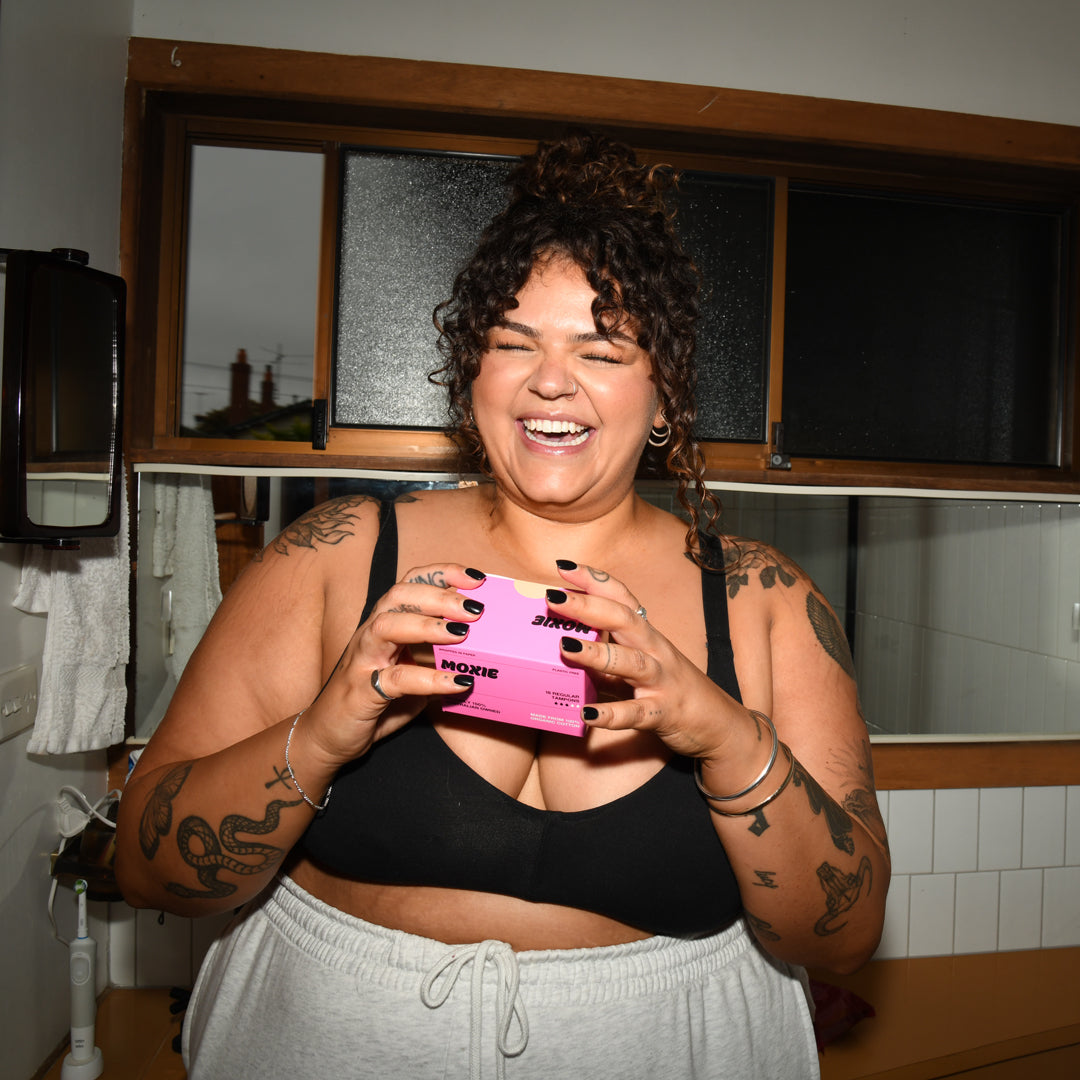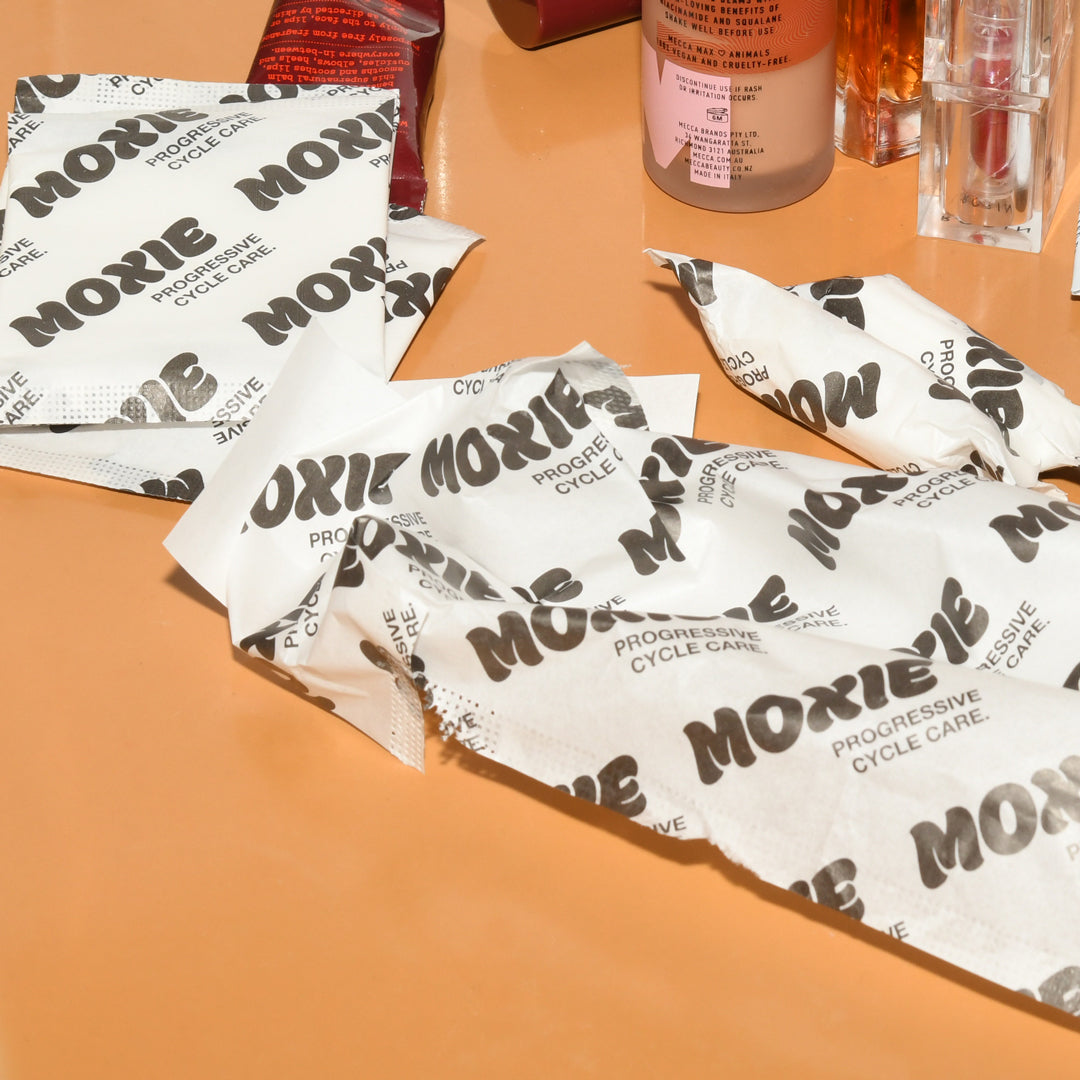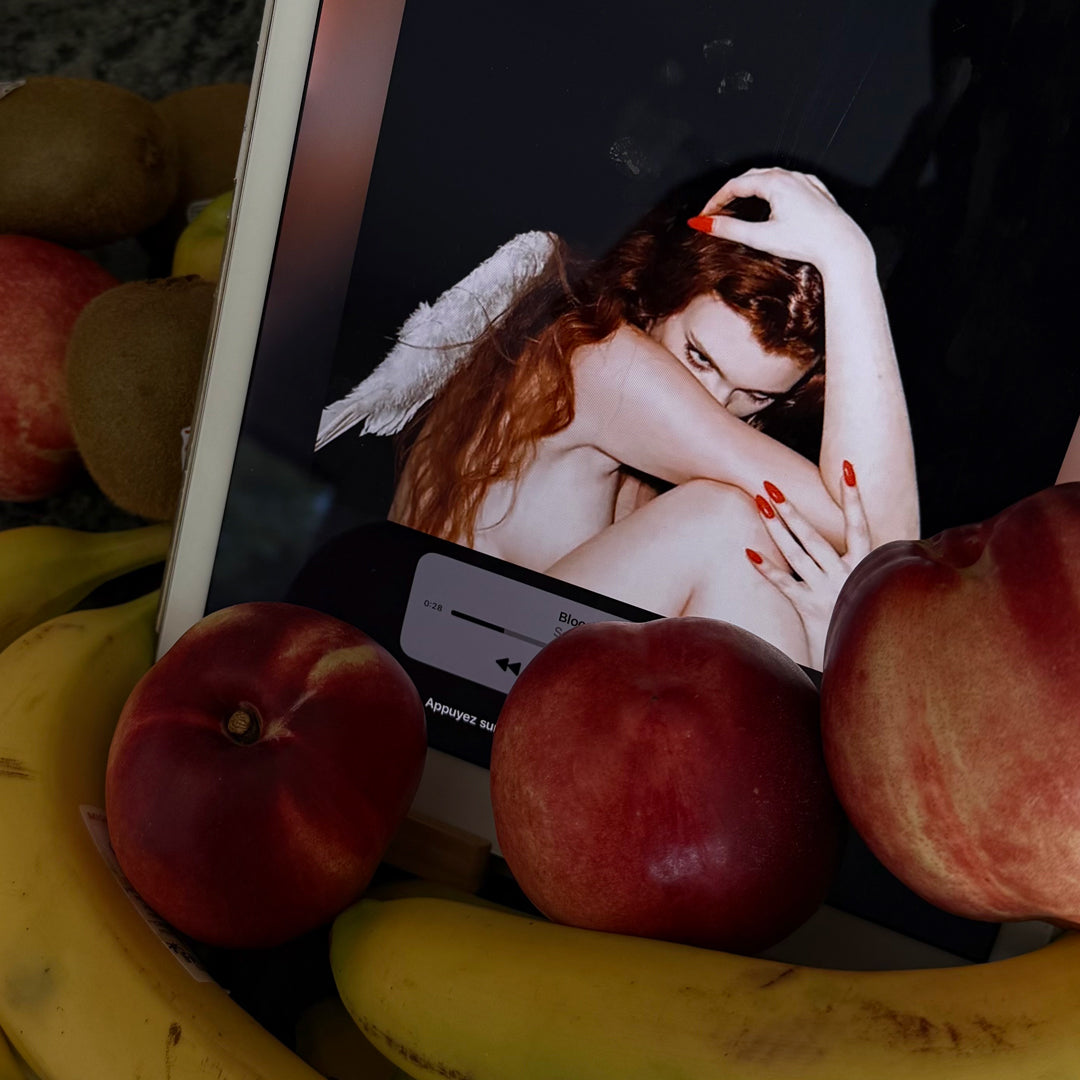How to self-check your breasts/chest.

With most of us being touched by breast/chest cancer in one-way or another (approximately 20,000 Australians are diagnosed with breast/chest cancer each year and 9 people lose their lives to the disease each day*), self-awareness can lead to early detection, which in turn can in turn help provide better treatment outcomes for patients.
A li’l but very important note before we kick things off… most breast/chest tissue will have lumps and bumps, with most of these being completely normal and harmless. Some people have more lumps and bumps than others. It’s the ‘abnormal’, cancerous ones that we want to be on the lookout for.
"Suspicious lumps are not likely to be smooth", says Dr. Nicole Stamatopoulos, a Sydney-based OBGYN and of of our trusted resident health experts. "Cancerous lumps can be irregular in shape and they're not likely to be mobile. They're generally not tender, although prolonged pain in the breast/chest area can also be of concern; so if you have pain that doesn't seem to go away, it's worth getting checked", adds Dr. Nicole. (We'll explain more about what to look out for a little further on).
All genders are at risk of developing breast/chest cancer, and although it’s most common in people born with female reproductive organs, we encourage everyone to check themselves. We're here to help show you how.
Do this now, save it for later and don’t forget to tell your friends. But first up, here are some of your most FAQs around breasts.
WHAT IS A SELF-BREAST/CHEST EXAM?
This is a check conducted by you where you feel and look for any unusual changes to your breast/chest; like lumps, dimples, unusual puckering of the skin, or discharge from the nipples (more on what to look for, a little further on).
Being self-breast/chest aware is about knowing how yours look and feel – everyone’s ‘normal’ is going to be different. Checking your breasts/chest regularly and understanding what ‘normal’ feels and looks like for your body will help you identify any changes over time; and, when to get checked by your GP.
AT WHAT AGE SHOULD I START CHECKING MY BREASTS/CHEST FOR ABNORMAL LUMPS?
Dr. Nicole says that you're never too young to start familiarising yourself with your own body. "If you have a family history of breast cancer you may want to start checking sooner*, but it doesn't really matter how young you start - it's imporant to get to know your body and know what you're feeling for, without feeling embarassed, or like it's something wrong".
If ever in doubt or if you're unsure, check in with your GP.
*whilst breast screening usually occurs at around age 50 in Australia, some Doctors recommend as early as 20yrs old if you have a family history of the disease. Check in with your GP or breast/chest specialist.
WHY DO MY BREASTS/CHEST SOMETIMES HURT?
There could be a few contributing factors here, and only a Doctor can really diagnose what’s going on – but the most common culprit is hormonal changes in your body. Although, it could be something as simple as an ill-fitting bra, if you wear one of those. If you’re concerned, or the pain lasts beyond your period, get checked by a Doc.
WHY DO MY BREASTS/CHEST GET BIGGER BEFORE MY PERIOD?
A common PMS symptom for those who period, breast-swelling and tenderness will usually occur before your period and is a sure sign your body is experiencing some hormonal changes. During ovulation (about midway through your cycle), estrogen is likely to make your breasts feel more perky.
After ovulation, your breasts will continue to feel full as whilst strong levels drop, progesterone increases in prep for a possible pregnancy. As a result, milk ducts in the breasts may also begin to swell, as your body thinks it may need to prepare itself for feeding a bay.
If you don’t get pregnant, the progesterone will continue to build up in your body until your period, when your hormone levels start to drop (and that full feeling in your breasts drops along with them).
WHY ARE MY BREASTS/CHEST DIFFERENT SIZES?
This is super common – in fact, most people will have one breast that’s bigger than the other. This can be attributed to genetics, pregnancy and certain medical conditions and it’s generally nothing to worry about. Every body is different, and pretty special in its own way. If you’re concerned, check in with your Doctor.
WHEN AND HOW OFTEN SHOULD I CHECK MY BREASTS/CHEST FOR LUMPS?
“Once a month is a good time to check", says Dr. Nicole. "It doesn’t so much matter which part of the cycle, but at the start of menstruation is a good time, as the hormones are low [your breasts/chest are not as lumpy at this time of your cycle]. Your period also serves as a good reminder!”.
If you no longer have a period (i.e. have gone through menopause), or don't have a period at all, do your check on the same day every month. “Pick a similar time every month; this way, you'll become more in tune with what your breasts or chest feels like at a particular time and therefore notice changes that may not have been there last month, or two months before”, adds Dr. Nicole.
HOW OFTEN SHOULD I GET A BREAST CANCER SCREENING, AND AT WHAT AGE?
Recommendations will vary by country and so it’s best to check with your local health department or Doctor. BreastScreen Australia, a joint initiative of the Australian and state and territory governments that offers those over 40 a free mammogram every 2 years, and actively invites those aged 50 – 74 to screen. Find your local screening contact HERE.
Irrespective of your age, if you have a history of breast/chest cancer in your family, notice any abnormal lumps, bumps, discharge, or changes in your breasts/chest, then please do check in with your GP as soon as possible.
Okay Moxettes, it's time to get checking.
WHAT TO LOOK AND FEEL FOR WHEN DOING A SELF BREAST/CHEST CHECK
Remember, you should be checking regularly – monthly (at the same time) is usually recommended by Docs, so that you can notice if there are any significant changes. Here’s what to look out for:
- Any obvious changes in the size and shape of your breast/chest
- Any ‘new’ lumps anywhere in the breast or armpit area
- Dimpling or puckering anywhere on the skin
- Inverted nipple, nipple pain, flakiness or discharge of the nipple (other than breast/chest milk, if you’re feeding)
- Any unusual swelling or pain
If you notice any of the above, don’t panic - most breasts lumps are benign (non-cancerous) and are usually cysts - though it’s ALWAYS best to get checked, so please make an appointment with your GP as soon as possible.
HOW TO DO A SELF BREAST/CHEST CHECK IN 3 EASY STEPS
STEP 1: LOOK, IN A MIRROR
"Lumps are not the only thing that we look for", says Dr. Nicole. "Yes, identifying suspicious lumps is important, but the skin integrity and nipples is equally important when we're doing our check", she adds.
For this step, you'll need a mirror. Stand in front of it with your arms straight by your sides. Notice if there are any obvious changes to your nipples (like size, colour, shape, or discharge – you will notice naturally occurring changes if you are pregnant or have been breast/chest feeding) or the shape of your breasts/chest. Do you notice any lumps protruding out the sides, or lumps/bumps showing through the skin anywhere? You may even want to gently squeeze each nipple to see if there's any unusual discharge.
STEP 3: FEEL, STANDING UP
We recommend doing this in the shower, as the water and even some soap can help you feel your way around the breast/chest a little easier, with less friction. If you’re not comfortable doing this in the shower, do it standing (or sitting) upright.
Check one breast/side at a time using the opposite hand, with the pads of your three middle fingers. Start with light, then medium, then firm pressure, and work your way around every part of the breast/chest, feeling for any lumps that feel like they weren’t there previously, are painful, or are concerning you in any way.
Ensure you cover the entire area. You can start at the nipple and work your way around in a circular pattern, or you can go up and down the breast/chest (Dr. Nic also recommends splitting each side up into quadrants, and feeling one section at a time). Don’t forget to feel into the armpit, around your collarbone and around your bra line.
STEP 3: FEEL AGAIN, LYING DOWN
Your breasts/chest tissue can feel different in different positions, and so it never hurts to do a second check – this time, whilst lying down (probably not in the shower, for safety reasons!). In a lying down position, your breast/chest tissue can spread out more evenly – this can be an easier technique for those with a fuller chest.
In this position, place a pillow under one side of your shoulder/upper back (whatever is most comfortable) and rest your arm behind your head. Complete the same check as in step 2, on both sides (be sure to shift the pillow).
Schedule a reminder in your calendar or diary to do your check again the following month. You might also want to keep a little journal or notes on your findings, so that you can easily identify any changes from month to month. The more you check your breasts/chest, the more familiar you’ll become with what’s normal, for you.
WHAT TO DO IF YOU FIND A LUMP/WHEN TO SEE A DOCTOR
Firstly, don’t panic. It's quite common for your breast/chest tissue to change each month with hormonal fluctuations and other factors, and it's most often no cause for concern. Consult your Doctor ASAP if you find a lump or any kind of irregularity that looks or feels suss, if you notice any changes in your breasts/chest that is likely not driven by hormones (i.e. your period, or pregnancy), if you notice any of the changes mentioned above in ‘What to look for’ from month to month, or anything at all you might be concerned about when it comes to the health of your breasts/chest.
If in doubt, always get checked out. If you’re not comfortable or satisfied with the treatment or advice you receive from your Doctor, don’t hesitate to seek a second (or third) opinion. Your body, your breasts/boobs/chest, your choice, Moxette.
*National Breast Cancer Foundation Australia stats 2022.



